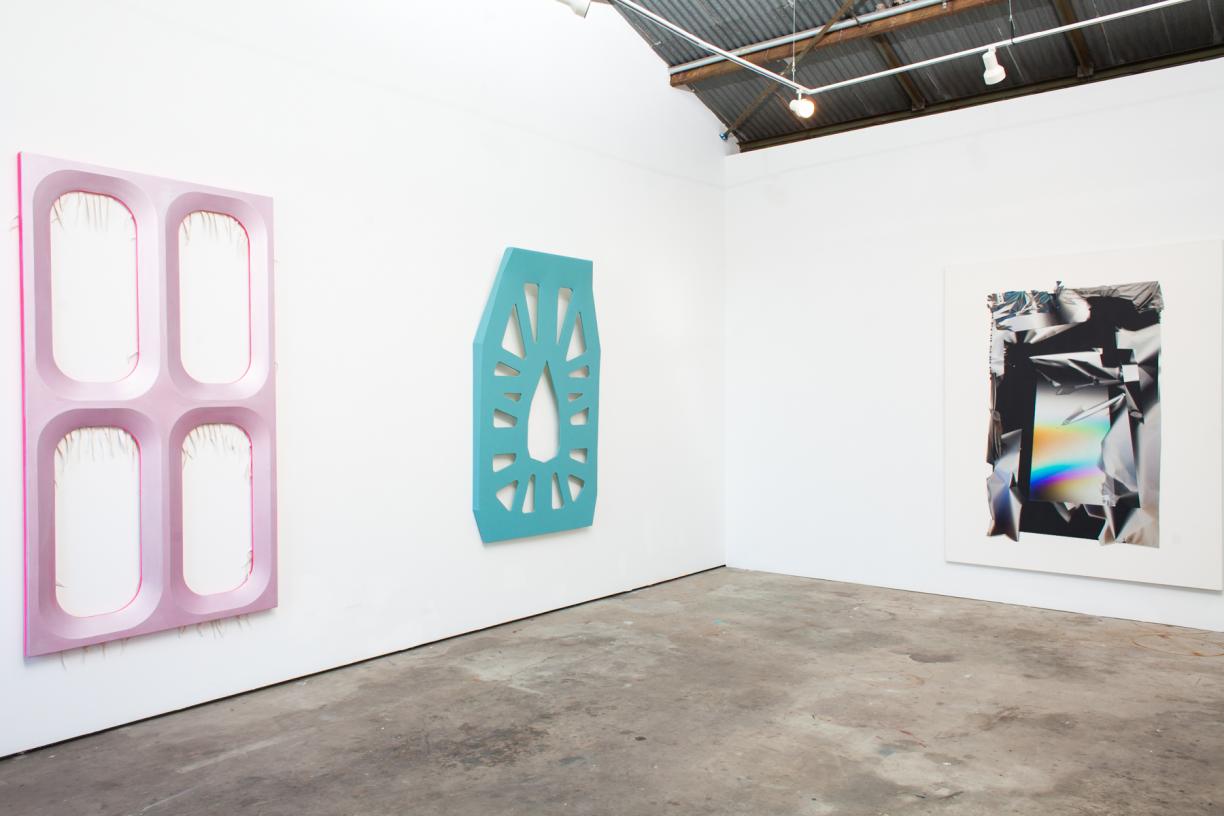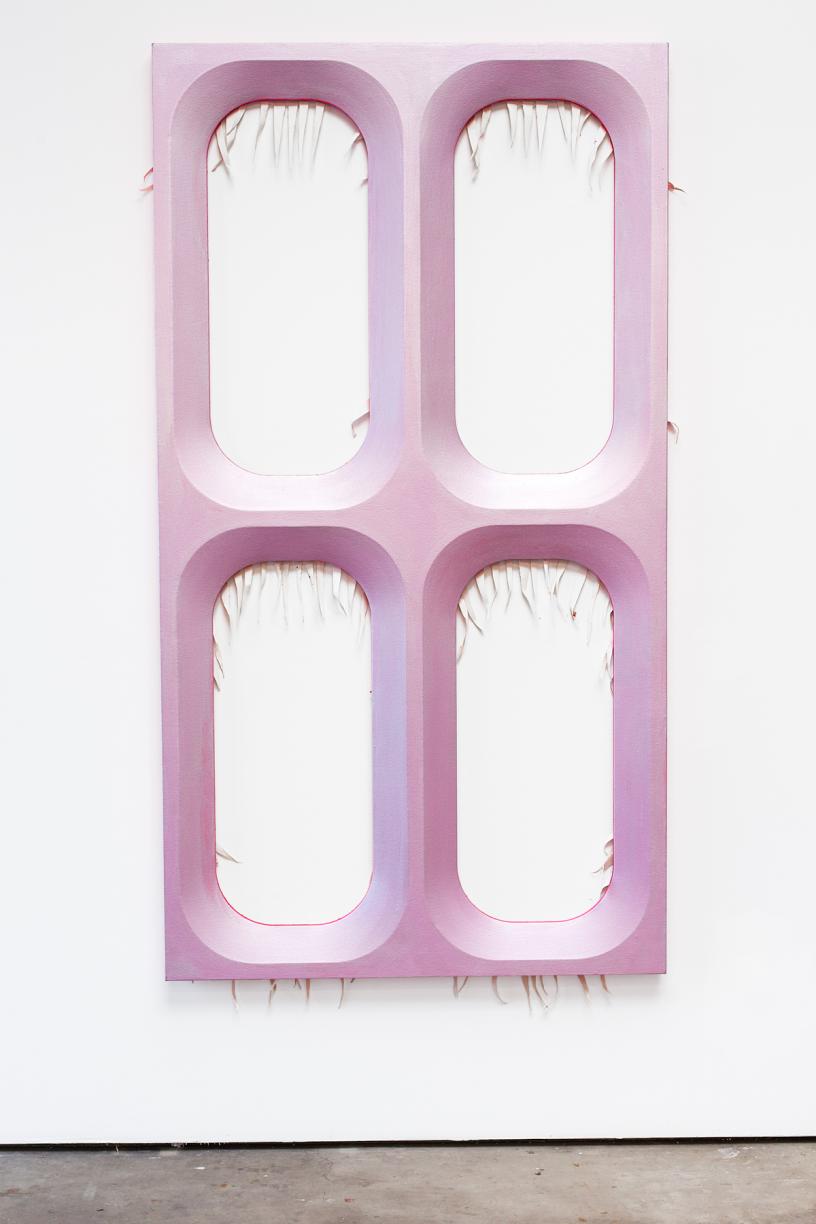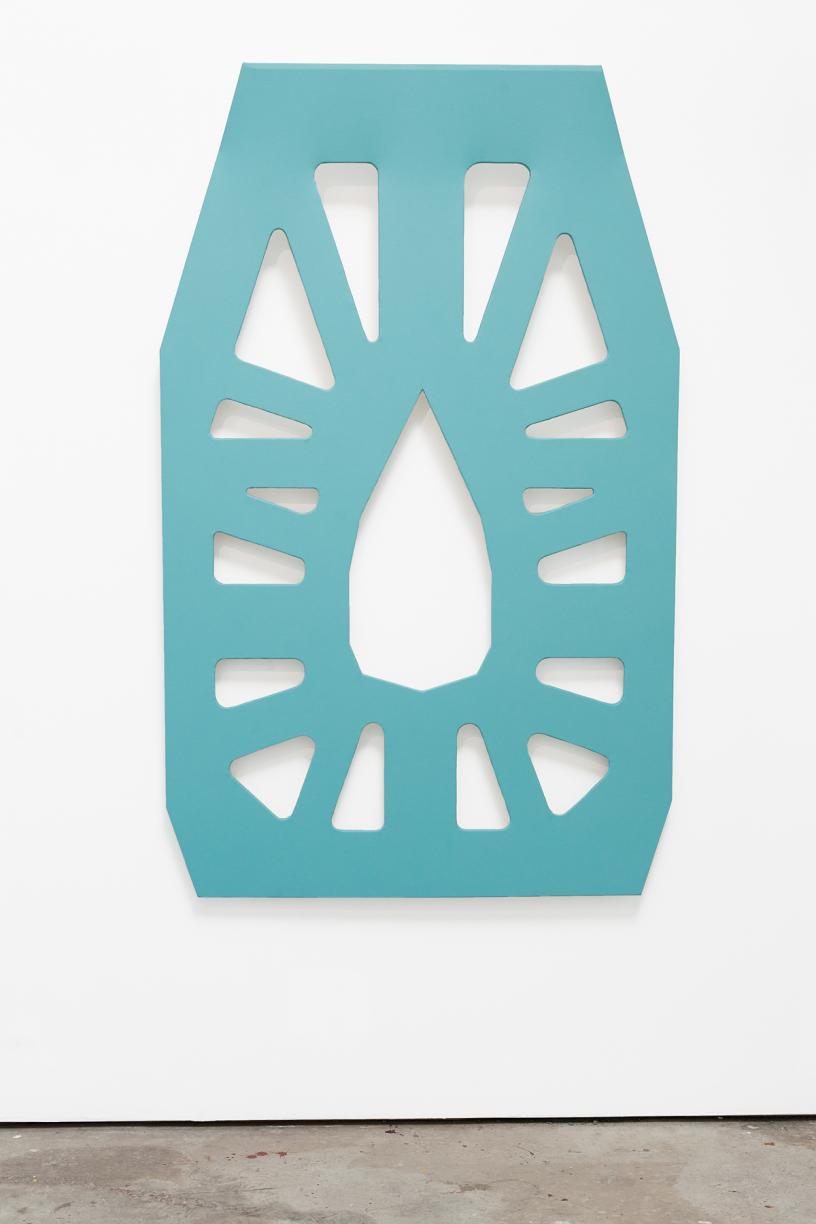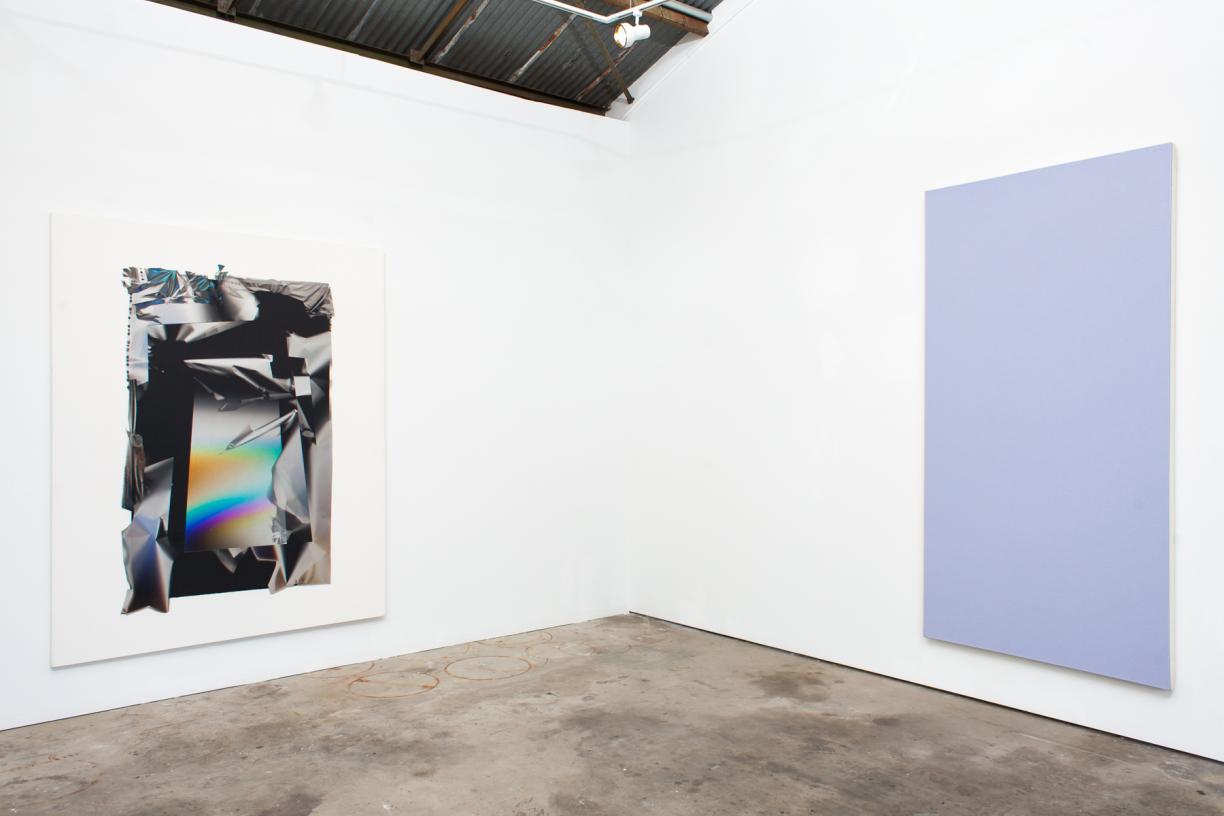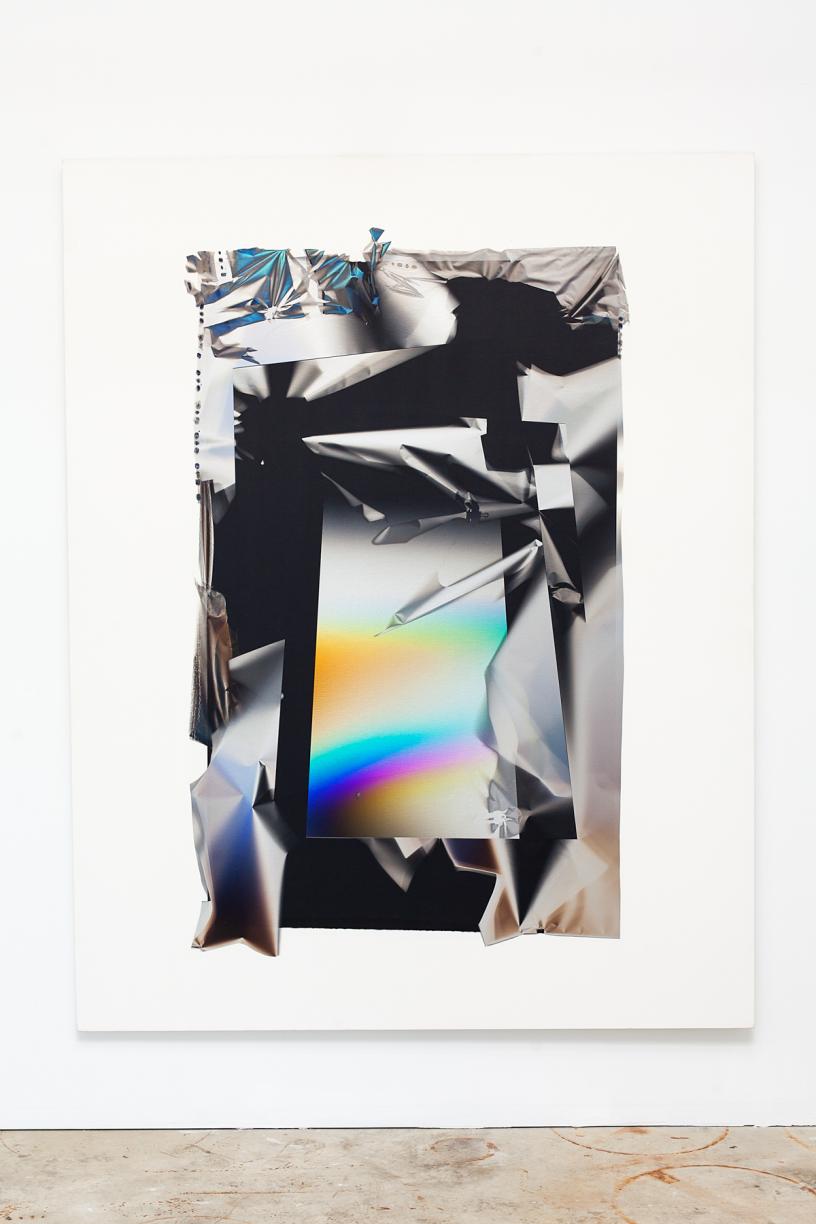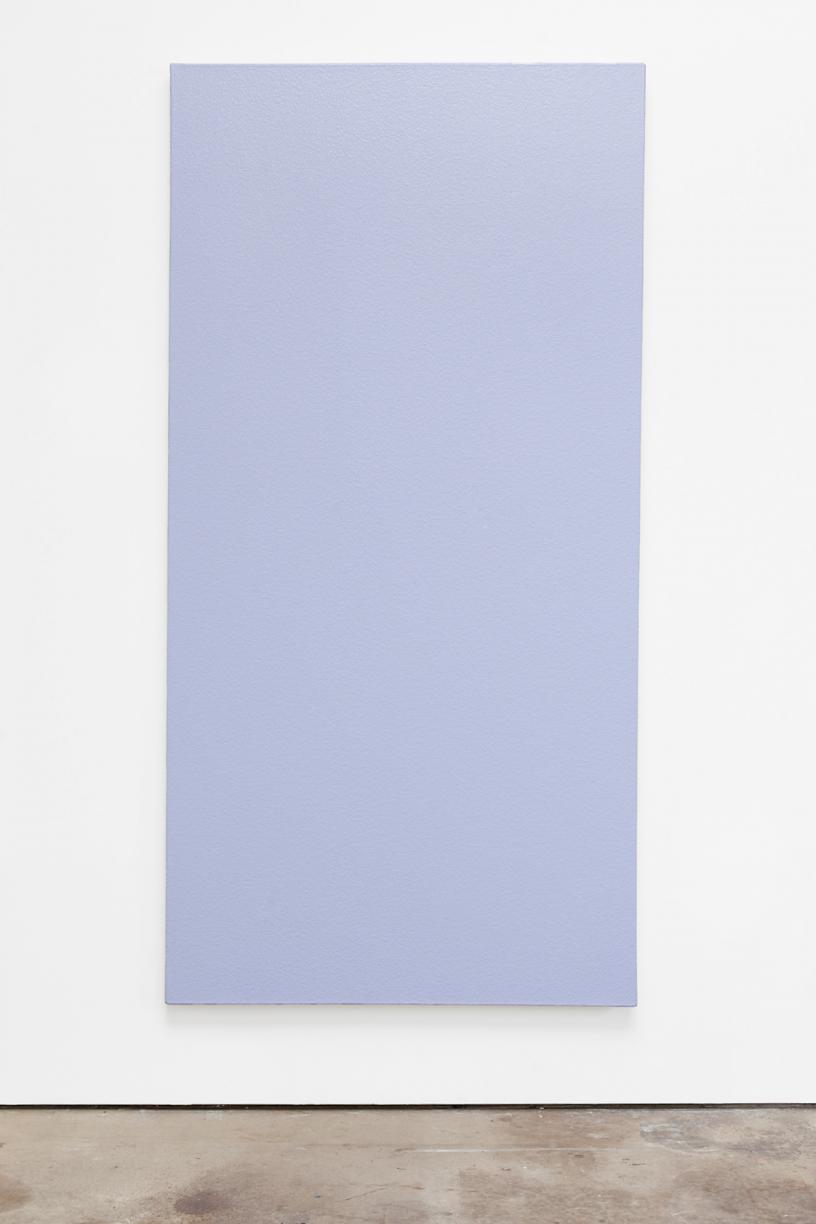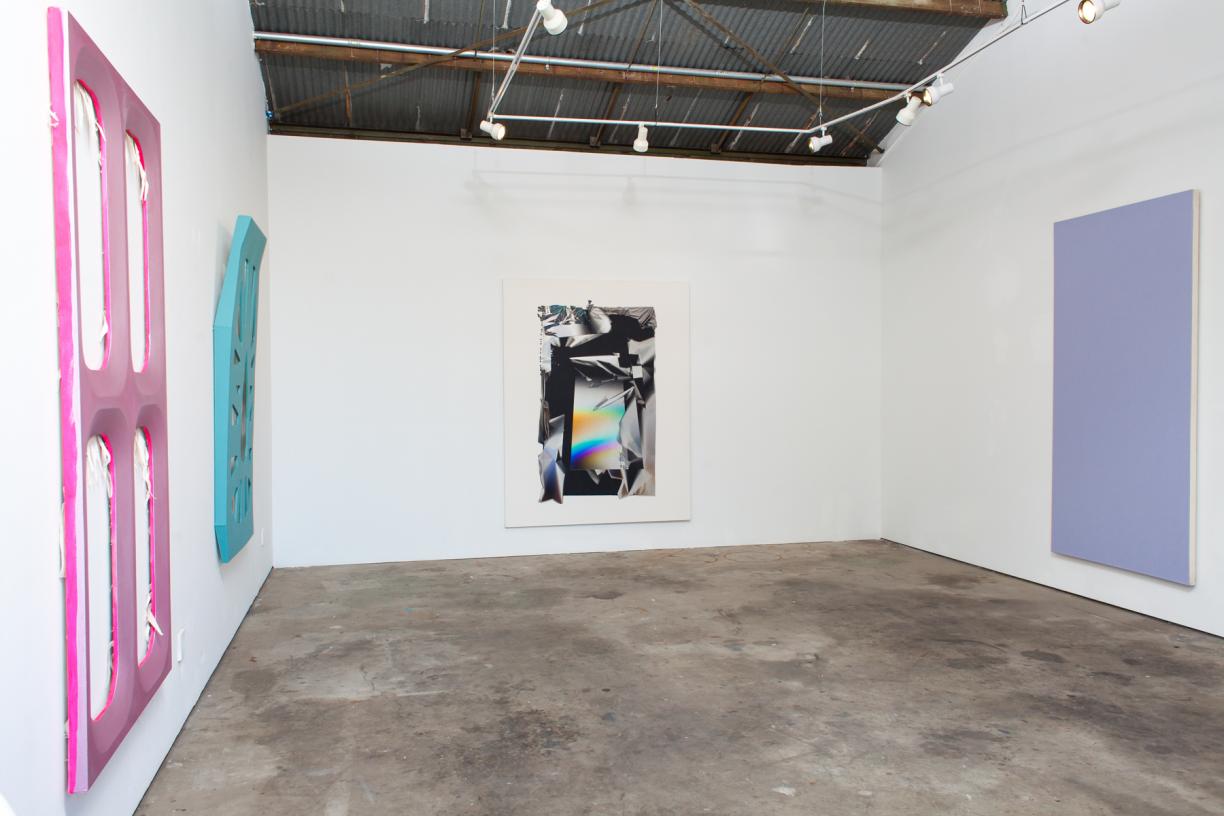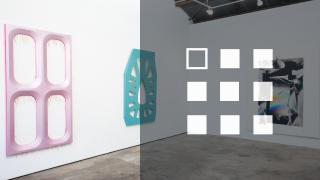That was Ken, This is Now
Evergreene Studio is pleased to present the work of Olivier Mosset (CH), Blair Thurman, and Larry Bell, featured this summer at a warehouse exhibition in Malibu, California.
Evergreene Studio is the re-emergence of Evergreene that originated in Geneva, Switzerland in 2002. Over the years, Evergreene fostered the growth of upcoming, primarily Swiss-French artists including Delphine Coindet (FR), Andreas Dobler (CH), Denis Savary (CH), and Pierre Vadi (CH) who all have places in internationally renown Art Institutions, Museums, Biennials, and are included in important private collections. After a two-year hiatus, Evergreene Studio has formed in Los Angeles and continues to support artists working in the same vein as the previous program. This exhibition marks the introduction of Evergreene Studio in the United States as a platform to merge its history with the added energy of Southern California.
That was Ken, This is Now is the matching of two networks of artists congruent with one another who share overlapping values. Olivier Mosset is a forefather of a specific Franco-Swiss art group (including Steven Parino, John Armleder, and Sylvie Fleury) constructed in Switzerland, which embraces Minimalist and Neo-Geo concepts while simultaneously moving away from traditional art values. As a West Coast contemporary, Larry Bell also shares an unconventional way of art making in that he objectifies his pieces by placing emphasis on the viewer’s perception. In the late sixties he was included in one of the first exhibitions on Minimal art, which is unmistakably referenced in his shapely glass sculptures. Like Larry Bell, Blair Thurman shares an air of coolness in regards to his affinity for radical iconic American culture rooted in the 1950s through to the 1970s. Thurman is a key part of the Franco-Swiss family and continues to exhibit with Olivier Mosset internationally, adding a Pop-minimalist influence with an interest in cars and neon lights.
In short, as written in a text message by art historian Samuel Gross: “Fetish finish, cars, California dream, radical, cigar, hut, motorcycle.”
American artist Blair Thurman was born in 1961 in New Orleans. Working closely with Evergreene while it was still a gallery in Geneva, he has recently shown at Frank Elbaz in Paris (2012), Gagosian in London (2013), Le Magasin CNAC (Centre National d’Art Contemporain) in Grenoble, France (2014) and Lang + Pult in Zurch (2014). Thurman’s work explores different avenues of painting and canvas construction, taking an alternate approach to the traditional way of presenting paintings by creating curves and cutouts with wooden stretchers. Neon tubing is an added element used to manipulate how the canvas’ color and structure are perceived. As a result, many connect his pieces to neon advertising signage and its relation to commercial consumer culture (more specifically American, around the 1950s). An extension of this is his use of deconstructed car parts such as grills, wheels and racetracks, all of which take on an abstract aesthetic of after being taken out of context. With a general Blair Thurman’s work lies somewhere in the fusion of Conceptual and Pop Art.
Olivier Mosset was born in 1944 in Bern, Switzerland, and currently lives and works in Tucson, Arizona. Mosset’s sculptures and paintings are exhibited internationally and are included in the public collections of the Museum of Modern Art in New York, Centre Pompidou in Paris, and the Migros Museum in Zurich. In the late 1960s he was a part of the group BMPT, a title comprised of the first letter of the last names of Daniel Buren, Michel Parmentier, and Niele Toroni. The group aimed to eliminate the notion of the author entirely in order to leave the viewer to consider the art as an object. This is a concept that Mosset has carried with him in his practice of both painting and sculpture. Mosset’s works are, in a sense, “found abstractions” as they are often derived from existing sites and objects and are transformed to create what many refer to as monochromes. Mosset is known for these large, color focused paintings that tend to take on minimalist qualities but have transcended those limits over the past few decades, moving in and out of Minimal and Conceptual art and Geometric Abstraction.
Born in 1939, Larry Bell is an American artist from Chicago who gained recognition for his glass sculpture pieces during the 1960s and 1970s in Los Angeles, California. His work is largely associated with the Light and Space movement of the West Coast, which included artists such as James Turrell, Peter Alexander, and Doug Wheeler. Bell is concerned with the way in which one’s perception of a piece is formed by his/her spatial interaction with it as an art object. The activity between light and material is the vital component in the creation of his art (which has come to include works on paper), and the chemical treatments of said materials are a constant exploration. Larry Bell’s work is found in the collections of Centre Georges Pompidou in Paris, Los Angeles County Museum of Art (LACMA) in Los Angeles, the Whitney Museum of American Art in New York, and the Tate Gallery in London.
